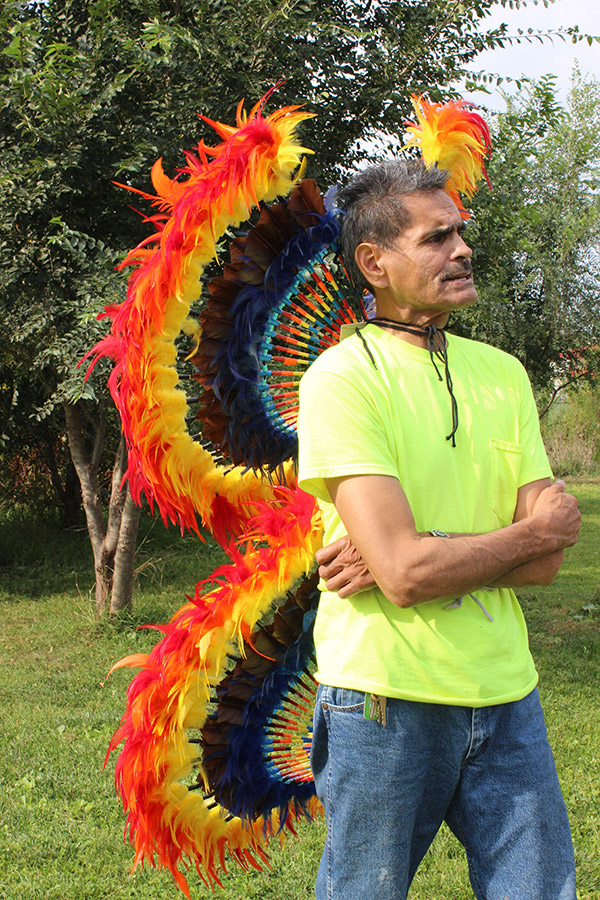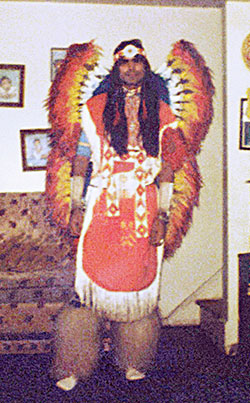
OmahaCare resident Albert “Junior” Dick was born on the Omaha Reservation in northeast Nebraska in 1947. Because he was responsible for caring for his ailing grandfather, Junior attended school through the eighth grade. There was no high school on the reservation at the time.
Junior eventually moved to suburban Chicago to find work and live with an uncle. There he was introduced to fancy dancing. There he became a champion fancy dancer.
Strong, athletic and chiseled aptly describe Junior who, at age 67, looks as though he could still dance circles around others 40-50 years his junior. He began going to pow wows at his uncle’s urging, ultimately scaling the ranks to where he competed for titles and prizes. He often drove (or was driven) hundreds of miles on weekends to some far-off distant pow wow. He’d sleep in the car or on a sofa, then return home to be at work come Monday.
Fancy dancing is fast-paced, flashy, brightly colored and energetic. Junior said fancy dancers are judged on their regalia (costumes) and ability to stay in time with the cadence of an ever-changing drum beat. The regalia—featuring feathered bustles, beaded bodice, bells, leggings, turban, rosette, harness, cuffs, anklets, moccasins and epaulettes—are designed to accentuate a dancer’s movement. Back flips, cartwheels and splits often are included in the choreography of champion fancy dancers.
 As one can imagine, it’s expensive to assemble a dancer’s regalia—Junior said his cost more than $3,000 in the 1970s and took dozens of hours to hand-make—and dancers compete for a wide range of reasons. For Junior, it was a way to honor the Omaha tribe, to take pride in his heritage, to be who he is…
As one can imagine, it’s expensive to assemble a dancer’s regalia—Junior said his cost more than $3,000 in the 1970s and took dozens of hours to hand-make—and dancers compete for a wide range of reasons. For Junior, it was a way to honor the Omaha tribe, to take pride in his heritage, to be who he is…
A champion.
